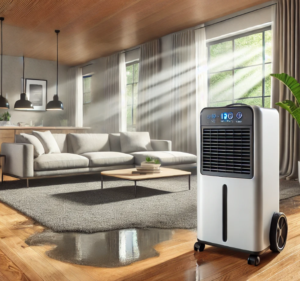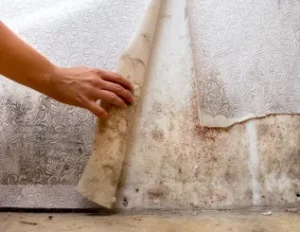When water damage strikes your home or business, quick and effective action is critical to minimize destruction and prevent further issues like mold growth. While various tools are used in water damage restoration, one of the unsung heroes of the process is the dehumidifier. These machines play a vital role in drying out affected areas and ensuring your property is restored to a safe and healthy condition.
Why Dehumidifiers Are Essential in Water Damage Restoration
Water damage doesn’t just affect visible surfaces like floors and walls; it also impacts the air in the room and hidden areas, such as inside walls and under floors. Excess moisture in the air can slow down the drying process and create an environment ripe for mold and mildew growth. Dehumidifiers address this issue by removing moisture from the air, speeding up the restoration process and preventing long-term damage.

How Dehumidifiers Work
Dehumidifiers extract moisture from the air through a process of condensation. Air is drawn into the dehumidifier, passed over cooling coils, and moisture is condensed into water, which is then collected and drained. The dry air is then released back into the room, creating a controlled environment where materials like drywall, wood, and carpets can dry more efficiently.
Types of Dehumidifiers Used in Restoration
There are two main types of dehumidifiers commonly used in water damage restoration:
- Refrigerant Dehumidifiers: These are ideal for warm and humid conditions. They use cooling coils to remove moisture and are effective for most standard water damage restoration scenarios.
- Desiccant Dehumidifiers: These are better suited for colder conditions or situations requiring aggressive drying. They use a chemical desiccant to absorb moisture, making them effective in extreme environments.
Benefits of Using Dehumidifiers in Restoration
1. Prevents Mold Growth
Mold can begin to grow within 24-48 hours of water exposure. By quickly removing moisture from the air, dehumidifiers create an environment where mold and mildew cannot thrive.

2. Protects Structural Integrity
Excess moisture can weaken the structure of your home or business, causing wood to warp, drywall to crumble, and paint to peel. Dehumidifiers help maintain the structural integrity of your property by thoroughly drying out materials.
3. Improves Air Quality
Moist environments can lead to musty odors and poor air quality. Dehumidifiers remove excess moisture and restore a fresh, clean atmosphere, improving indoor air quality for occupants.

4. Speeds Up Restoration Time
Time is of the essence when it comes to water damage restoration. Dehumidifiers work alongside air movers and other equipment to expedite the drying process, allowing your property to be restored more quickly.
The Professional Touch
While portable dehumidifiers are available for homeowners, water damage restoration is best left to professionals. Restoration experts have access to high-capacity dehumidifiers and other specialized equipment, ensuring that the drying process is thorough and effective. They also have the expertise to assess the extent of the damage and place dehumidifiers strategically for optimal results.
Conclusion
Dehumidifiers are an essential tool in the fight against water damage. By efficiently removing excess moisture from the air and preventing secondary issues like mold growth, they help ensure a safe and successful restoration process. If you’re dealing with water damage, trust the professionals to use advanced dehumidification techniques to bring your property back to its pre-damage condition.
At RestoPros of Hudson County, we specialize in comprehensive water damage restoration services. Contact us today to learn how we can help restore your home or business with our expert tools and techniques.
